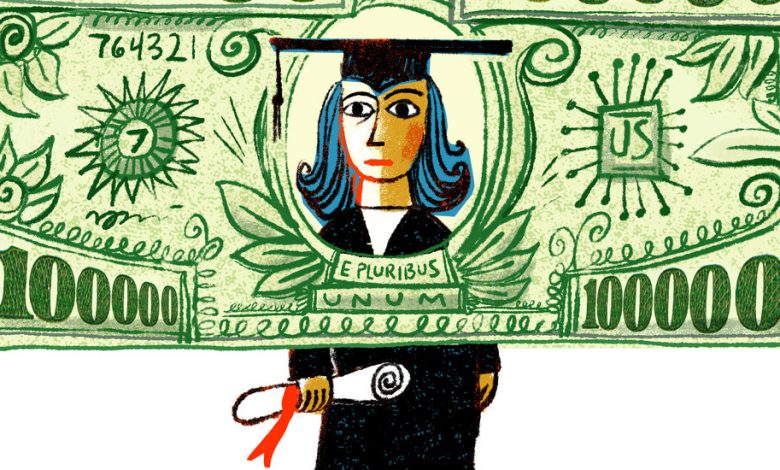Some Colleges Will Soon Charge $100,000 a Year. How Did This Happen?

It was only a matter of time before a college would have the nerve to quote its cost of attendance at nearly $100,000 a year. This spring, we’re catching our first glimpse of it.
One letter to a newly admitted Vanderbilt University engineering student showed an all-in price — room, board, personal expenses, a high-octane laptop — of $98,426. A student making three trips home to Los Angeles or London from the Nashville campus during the year could hit six figures.
This eye-popping sum is an anomaly. Only a tiny fraction of college-going students will pay anything close to this anytime soon, and about 35 percent of Vanderbilt students — those who get neither need-based nor merit aid — pay the full list price.
But a few dozen other colleges and universities that reject the vast majority of applicants will probably arrive at this threshold within a few years. Their willingness to cross it raises two questions for anyone shopping for college: How did this happen, and can it possibly be worth it?
Who Pays What
According to the College Board, the average 2023-24 list price for tuition, fees, housing and food was $56,190 at private, nonprofit four-year schools. At four-year public colleges, in-state students saw an average $24,030 sticker price.
That’s not what many people pay, though, not even close. As of the 2019-20 school year, according to federal data that the College Board used in a 2023 report, 39 percent of in-state students attending two-year colleges full-time received enough grant aid to cover all of their tuition and fees (though not their living expenses, which can make getting through school enormously difficult). At four-year public schools, 31 percent paid nothing for tuition and fees while 18 percent of students at private colleges and universities qualified for the same deal.




